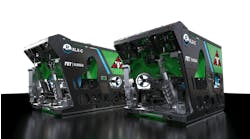New subsea cementing system offers lower costs, reduced risk
DeltaTek Global has introduced the new subsea cementing system SeaCure, which it says can help optimize the well construction process. DeltaTek says that the system delivers stabbed-in, inner string cementing for subsea wells, and uses drill pipe inside the casing to optimize cement jobs. The novel system is said to provide a range of major cost and time benefits to drilling and field development operations.
Using a combination of standard industry components, such as a double non-return valve latch-in receiver float equipment with a proprietary inner string bottom hole assembly, SeaCure is designed to become an integral part of the inner string when deployed. Latch-in float equipment is run on the bottom of the casing or liner to be cemented, with the first section of inner string containing the corresponding latch-in drill pipe adapter at the base and a bespoke rupture disc port.
Once ready to run inner string, the SeaCure bottom hole assembly (BHA) is run, followed by the rest of the inner string, making the SeaCure system an integral part of the inner string when deployed. As the inner string and running tool are lowered and secured downhole, it allows the SeaCure tool to slide partially closed and into the free rotate position which allows for the safe engagement of the running tool.
This section of the SeaCure tool is said to be the most important part as it makes the whole technique possible. The slip joint feature compensates for length discrepancy between the casing and inner string. As well as providing a generous 10 ft of stroke, a clutch mechanism helps ensure safe engagement and disengagement of the rest of the casing system. This technique removes the need for large running tool seals as rotary connections form the seals.
Once at cementing depth, cement is pumped into the casing through the inner string. The wiper dart is launched, followed by a small amount of slurry and when the wiper dart locks with the receiver at the base the resulting pressure bursts the rupture discs, and the contents of the inner string can be safely circulated through the running tool allowing for post cementing internal circulation to start. Pressure tests can be conducted during this process and while the cement is still green which eliminates the risk of micro-annulus development.
With the casing tests completed as part of the cementing process, the inner string and SeaCure tool can be recovered allowing the next section to be drilled with no cement plugs or shoe track to damage the BHA or drill bit.
DeltaTek says that SeaCure is a completely mechanical system with no electronics or hydraulics, which the company says makes it a robust and reliable technique for optimizing cement jobs and saving rig time. Removing clean out trips from subsea well drilling programs can save upwards of $500,000. Furthermore, it improves cement placement and reduces displacement, facilitates offline casing pressure testing, and improves drill out performance with minimized risk of damage.



